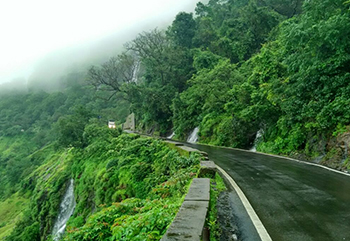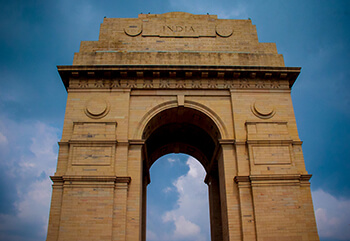The Downside of Cycling and Tips To Beat Them

It is well established that cycling regularly is excellent for physical fitness and outstanding for mental health. It is also one of the most eco-friendly and sustainable modes of travel. Another significant benefit is the savings that a cyclist can make compared to a person who spends on fuel costs and all other expenses that come with using motorized vehicles.
Having so many positives does not mean that there are no demerits to cycling. There are, which we will discuss shortly. At the same time, we'll share well-researched suggestions and tips on dealing with these issues.
1. Cycling is dangerous, especially due to poor cycling infrastructure

The bad news is cycling infrastructure in the form of cycle-only lanes hardly exists in most parts of the world. There are very few places, cities, countries that can boast of being a cyclist utopia. But let that not keep you away from enjoying cycling, because there's good news. Looking at statistics and information available, the percentage and number of cycling pathways are only growing. And awareness of cycling as a viable and better alternative to motorized transport is also getting well established.
You could follow our well-thought-out suggestions when you do not have good cycling infrastructure on your route.
1. Travel at non-peak hours, avoiding crowded streets and competing with motorized vehicles. You can choose to travel earlier or post the peak traffic timings.
2. Use routes with lesser traffic, albeit it may be a little longer.
3. You should try and cycle with other cyclists. A group of cyclists has the edge over a single rider as a group is more conspicuous.
4. Encourage other people to cycle. More cycles translate into lesser air and noise pollution and will also help decrease road congestion that plagues multiple large cities. The more cyclists on a particular route, there is possibility that the city will have enough reason to include a designated bike lane in some time.
5. Wear a helmet whenever you venture out on your bicycle. It would make a big difference in the extent of injury in the event of an accident.
6. Wear reflective gear during early and late hours when lighting is low and at night time.
7. Obey all traffic laws and indicate using hand signals to other road users.
8. Do regular maintenance checks to avoid any on-road breakdowns
It's a catch 22 situation here. Cyclists do not use the road since there's no safe, dedicated bike lane, and authorities do not add cycle-only lanes, citing that no cyclist is using those routes.
2. Weather does not always support cycling comfort

Unfortunately, weather conditions vary at different locations and at various times of the year. We can only wish it be spring year-long, with lengthy, mildly sunny days and a relaxed, gentle breeze. Unfortunately, that is not going to happen. There are highs and lows; it can be humid and too sunny. And rains, especially monsoons, can put a dampener on enjoying a bicycle ride. We have put together a few solutions that you could use to beat and manage these challenges. In fact, if you successfully ride through different weather conditions, you will learn to be resilient a great skill to possess.
3. Dress in clothing suited to the weather condition
If it is too cold, you can use gloves specially designed to keep your fingers warm and allow flexibility to grip your handlebars and even easily change gears.
The cycling world has evolved, and you are bound to find suitable clothing for comfortable riding in each weather condition.
4. Lighting conditions not suitable for riding
Be mindful while riding during sundown or the winter months. If you don't have them yet, add bicycle lights to the front and rear of your bicycle. Additionally, as added safety, wear reflective clothes or maybe a reflective vest to be visible to other road users.
5. Bike Theft & Safe Storage
This one seems to be the number one issue on the top of most cyclists' minds, especially if you do not have a secure parking spot or you use street parking.
Suggestions and Tips to Increase the Safety and Security of your Bicycle
a) When you tether your cycle, it should be onto something that is installed or fixed into the ground.
b) Use more than one lock. At least two are recommended. A U-Lock is more robust than a steel chain. A good way would be to use the bicycle's frame, and one of the wheels together secured using a U-lock. Then use the cable lock to loop both wheels and the U-lock.

c) Use U-locks made of hardened steel and of a thick width, increasing their strength and making them tougher to cut. Additionally, a lock that rings an alarm when attempting to break open scares the thieves away is a better option.
d) If you have an option of a parking location, make sure it is a well-lit area, and preferably it has a CCTV facing it or in the vicinity.
e) Thieves are professionals in what they do; that is stealing. They spend some time observing. Don't be predictable. Change your parking spot as often as you can when you street park.
f) Quick-release mechanisms are convenient to adjust the bicycle seat height, and those on the wheels help you remove the wheels quickly. Unfortunately, these conveniences have made things easier for a thief. See if it's possible to swap them for keyed locks. That would help protect your seat from getting stolen.

g) Use Smart locks. A little on the expensive side but totally worth it. There is a choice of styles available, and the choice is growing. Smart locks and connected to your smartphones and can be tracked by GPS. In fact, each of these Smart locks has theft-resistant qualities. Some may sound an alarm in case of an attempt to tamper with them. You have some brands that send you a message and also show you the location of the bicycle.
h) Invest in Cycle insurance. This kind of insurance has become popular along with the popularity of bicycles. It may not save you from theft, but it deals with the financial loss part of the theft.
i) For safe storing your bicycle in your home or apartment, you can get creative and find designs that would lend an artistic touch without getting in the way of your personal space. Check out these innovative cycle storage solutions here.
6. Cycling is tiring, especially long distances and uphill

Partially right, especially for the differently-abled and not so fit individuals. But remember, cycle regularly, and you will build stamina. There are cycling options available to make your ride easier and even more comfortable. You can choose from geared bikes that make going uphill a breeze. You also have the option of e-bikes. Its pedal-assist motor does part of the hard work, leaving you to enjoy the scenery and ride. Some e-bikes offer a throttle mode where all you need to do is steer along.
7. Cycling is not a complete workout
Well almost. What's missing is bone-building activities such as weight-bearing cardio or strength training. Besides cycling, you must include walking, running, and lifting weights which places stress on your bones, triggering them to bulk up.
8. Inability to carry passengers or luggage
While it is partly true, some bicycles are available to cart passengers, and most bikes can have added racks and panniers to move some quantity of baggage. Your regular bicycle is not meant for taking on a passenger, even if it is a young child. You would need to get a passenger-specific bike.
9. Expensive equipment, replacement, and repairs
A bicycle may involve a significant initial investment, but that's not always the case. You can pick bikes at all price points. But if you've got your heart set on one that is over your budget, we suggest you scout the different cycling clubs in your city, state, or even country. There are very often members who are selling their bicycles for a fair price. You may be able to find something that you fancy there. Check used vehicles online stores you may get lucky. Again, for specific add-ons, you can get them 'used' or as a second user from these online stores.
Any vehicle will require maintenance, repairs, and spares. You have to anticipate and have a fund for that. However, you can partially control some aspects of this fund. Maintenance is the key to avoid needing replacement or repairs. Maintaining and taking care of your bicycles and their different components does not always require expert skills. Go through instructions and videos that are available online. You can follow them and save yourself a pretty tidy sum and also become a cycle handyperson.
10. Physical Pains and Aches and Medical Issues
You may read about medical conditions that come because of cycling. Let's look at each situation and explore what you can do.
i) Backaches and pains.

It's more about incorrect seating methods or poor posture. It can also be attributed to an incorrectly fitted saddle and handlebar height. You can look up an expert and get a fitting to correct it. Or read about the ergonomics of setting up your bicycle and use that information on yourself.
ii) Ankle Pain
Ankle pain is typically from a bad pedaling technique called ankling, occurring if you point your toe upward when pedaling up and downward when pedaling down.
iii) Knee Pain
Knee injuries can result typically from the seat not being the right height. Your knee should be slightly bent when in the down pedal position.
iv) Numb fingers and hands

Your fingers could become numb by resting your hands in the wrong position on the handlebars; avoid placing the soft, middle part of your hand on the bars.
v) Neck Pain
A helmet worn too low in front causes riders to raise their neck too much, leading to neck pain.
vi) Inner Thigh Chafing
Your inner thighs can chafe from a too-wide bicycle seat. If you find chafing occurring, look to swap your seat for a narrower one.
vii) Elbow Pain
If you experience pain in the elbows, it can be possible that you are locking them during a ride. If you can't reach your handlebars without fully extending your arms, you may need a smaller bike frame or a shorter stem for your handlebars
viii) Nerve and artery Compression

This issue is one of the more physically severe afflictions. The nerves and arteries may get compressed due to sitting on a bicycle saddle for too long. It's primarily hardcore cyclists who get affected by this from hours of cycling regularly and over the years.
Most of the physical discomfort comes from either a poorly fitted bike, poor posture, or an incorrectly sized bicycle which causes you to ride in an overly stretched out or a cramped position. These issues can easily be fixed.
Most drawbacks due to cycling can be controlled and minimized. There is so much you can gain from cycling regularly. Use these suggestions and tips to avoid the negatives that come with cycling.
The bottom line is that the benefits far outweigh the disadvantages of cycling, and it should not become a deterrent to being a cyclist. Do you have any experiences or information on cycling disadvantages and their solution? Do share by writing to us in the comments box below.
- cycling
- tips
- Suggestions
Related Blogs

Cycling Adventures
The Iconic And Best Cycling Route In MaharashtraOne iconic cycling route, ‘Mumbai to Goa’, stands out from all the other riding trails in Maharashtra

Cycling Adventures
Explore India Through 6 Incredible Cycling RoutesChoose from our curated selection of 6 cycling routes with diverse landscapes and different fitness levels

Cycling Adventures
The Top Cycling Route Near BengaluruTake an enjoyable cycling trip that culminates at a beautiful and picturesque hill station - Coorg
